Keyforge’s New Mass Mutation Is Bigger and More Bonkers Than Ever
You may already be familiar with Richard Garfield’s Keyforge — a head to head card game in which each player guides a procedurally-generated and entirely random deck in battle against the other player. Now onto its 4th set, Mass Mutation, and Keyforge has proven to be a hugely entertaining antidote to the convoluted, expensive and often unbalanced trading card games that it was designed to counter.
Because we’ve never covered Keyforge before, I’ll start off with a bit of the history of the game, although I should also mention that this review is ultimately focussed on the Mass Mutation set. Each of the four Keyforge sets is made up of a fixed number of cards (about 250-350) which are then divided between seven houses, each of which has its own theme.
None of the sets we’ve seen so far include every house, and some of the sets we’ve seen so far will take cards from older sets and renew the artwork (or tweak the mechanics as we’ll see in Mass Mutation) slightly. Each deck within a set is then made up of exactly three of these houses, which make up the 36 cards that each player has to play with.
The way these decks are formed is really Keyforge’s unique feature, because each deck is completely randomised in the printing process, and is then produced with its own unique name. This, unashamedly leads to decks that range from weak to wonderful, and the Starter Set boxes that accompany each release feature “handicap” rules and pieces (known as chains) to enable players to balance the odds.
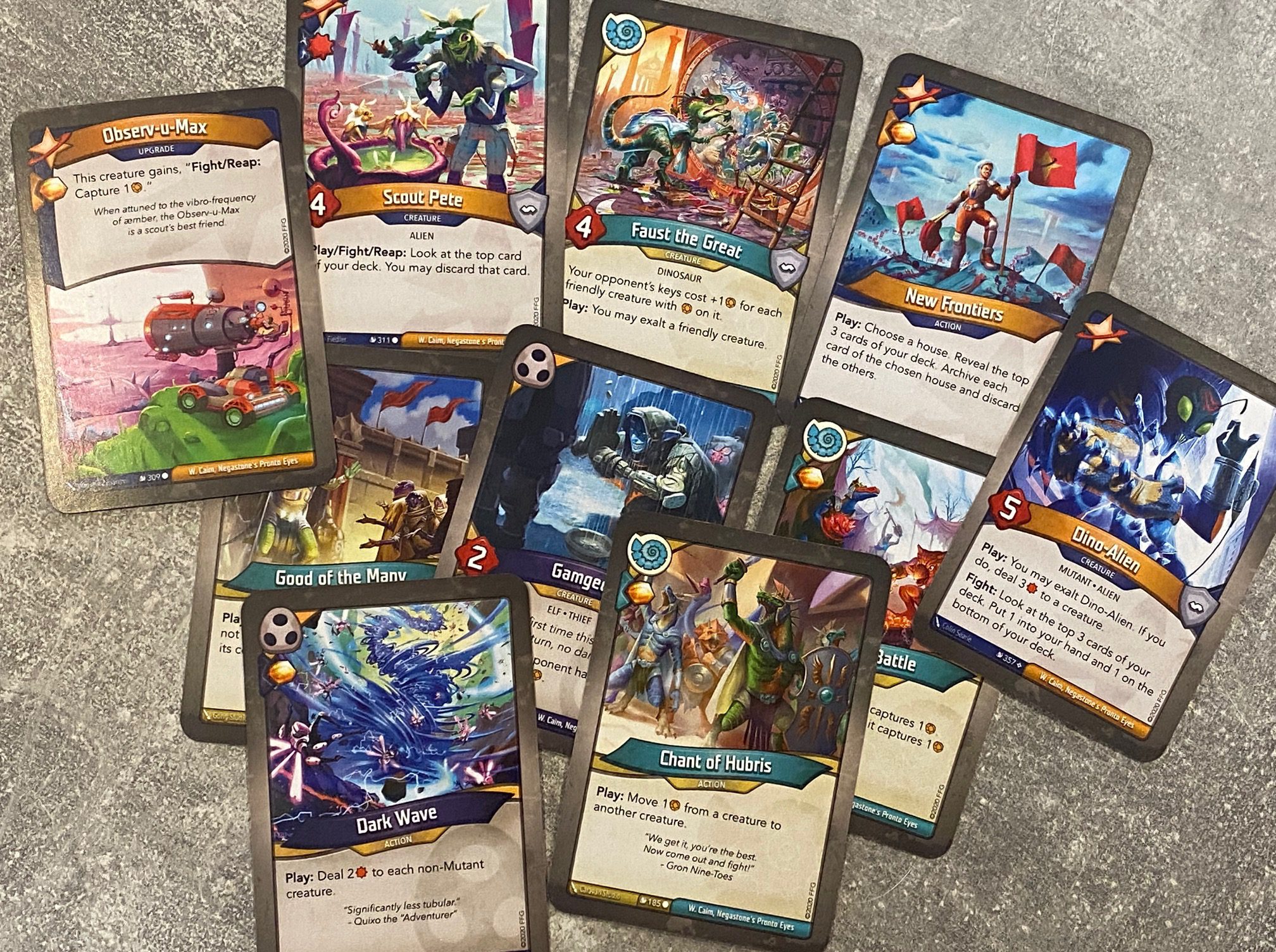
The critical thing to understand about Keyforge is that you only need to buy a single Starter Set to be able to play, or if you don’t need the tokens and printed rules, you could even just buy two decks. Each card has the name of the deck it is from printed on it, so there’s no swapping or trading cards at all, and the fun really is in making the most of whatever janky deck you happen to have opened.
Moving on from the general principles of the game to the more specific features in Mass Mutation, each set tends to introduce new ideas and mechanics. In Mass Mutation specifically, there are a few to consider, making this one of the most exciting sets we’ve seen to date. I’ll get into more detail on these later, but to take one example that I nodded towards earlier, some of the returning cards now come with enhancements that make them stronger than their standard variant.
As well as addressing some of the classic trading card problems such as cost and access to cards, Keyforge also aims to correct a lot of the gameplay flaws. It does this by providing a clear win condition that isn’t purely based on combat, and instead, the players must forge three keys by collecting (in most games) a total of eighteen æmber (six per key).
Collecting æmber can be achieved through numerous in game effects, including through the behaviour of creatures, by stealing it from the opponent, or as the result of an enhancement printed on a card (which is part of the new Mass Mutation feature that I mentioned above). Once six æmber have been secured, then on the start of the players next turn, a key must be forged — this basically helps to ensure that games are concluded in a fairly timely manner, because (except in the case of two very specific cards to date) keys cannot be unforged.
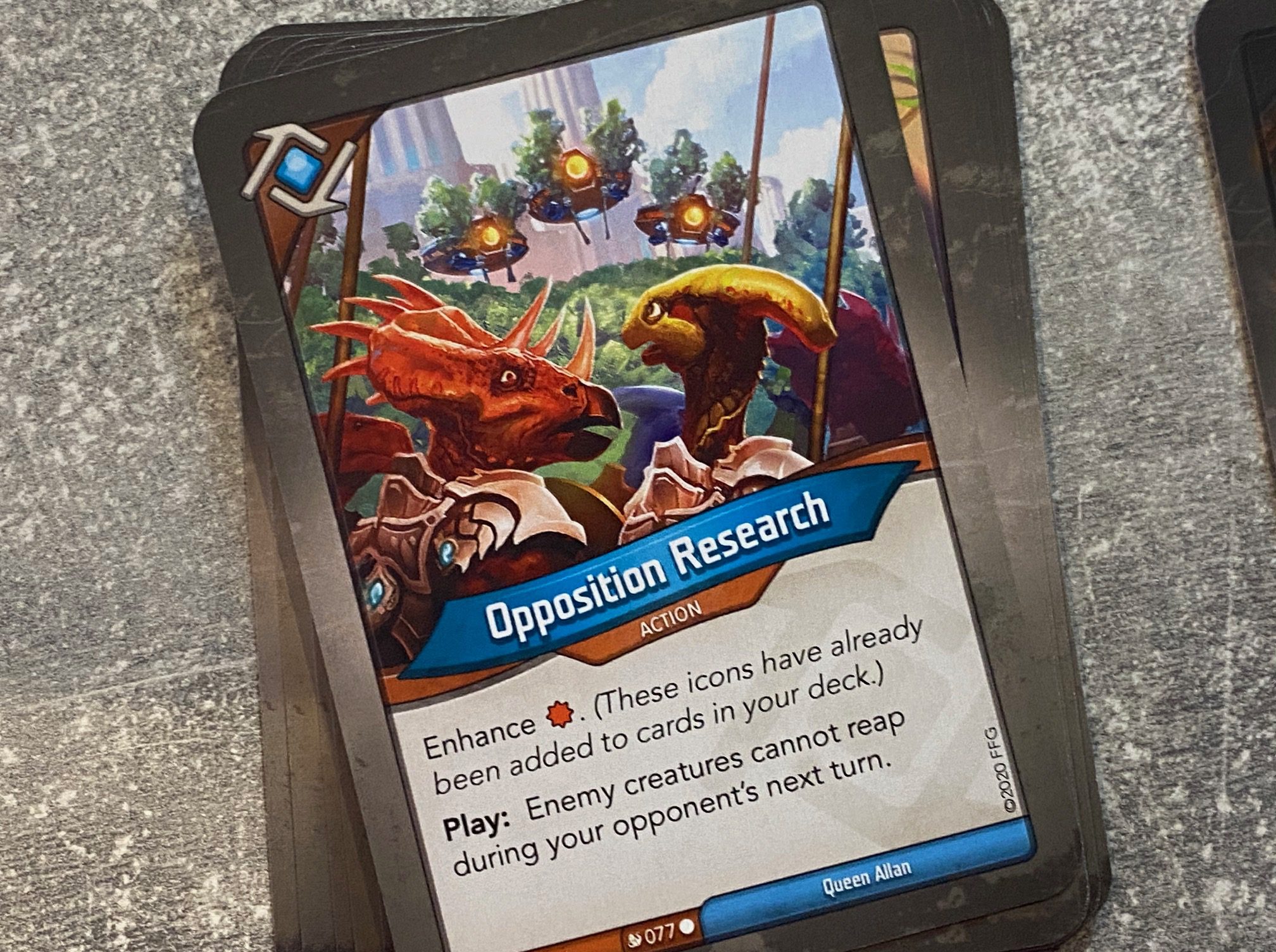
In terms of how the game plays, Keyforge also avoids classic gameplay issues like being unable to do anything due to a lack of resource. Instead, it uses the houses in your deck as the main driving force. The active player simply declares the house they want to use for the current turn, and then plays or activates cards from that house as much as they are able based on the cards in their hand and on the table.
As a lifelong fan of Magic: The Gathering (which was also designed in part by Richard Garfield) I can say for sure that there’s nothing worse than being unable to do something because you don’t have the mana. Keyforge completely changes the logic here, and whether we’re talking Mass Mutation or one of the other sets, I really like the speed at which Keyforge plays, and the consistency of the experience in terms of fun (despite the random decks).
I don’t think there’s any need for a detailed walkthrough of how to play Keyforge, but to give you an example of how a turn might play out, assume you’re using a deck featuring houses Sanctum, Shadows and Mars. You have a card from each in your hand, and you have two cards from house Sanctum on the table. The first has the “Reap” keyword and the second has a specific “Action” keyword that then describes what it does.
You start your turn by checking to see if you can forge a key. You have seven æmber, so you can (and must) forge. To do so, you discard six æmber and flip over one key. If you had now reached three keys, you would win, but let’s assume you don’t. Instead, you now declare house Sanctum for the turn.
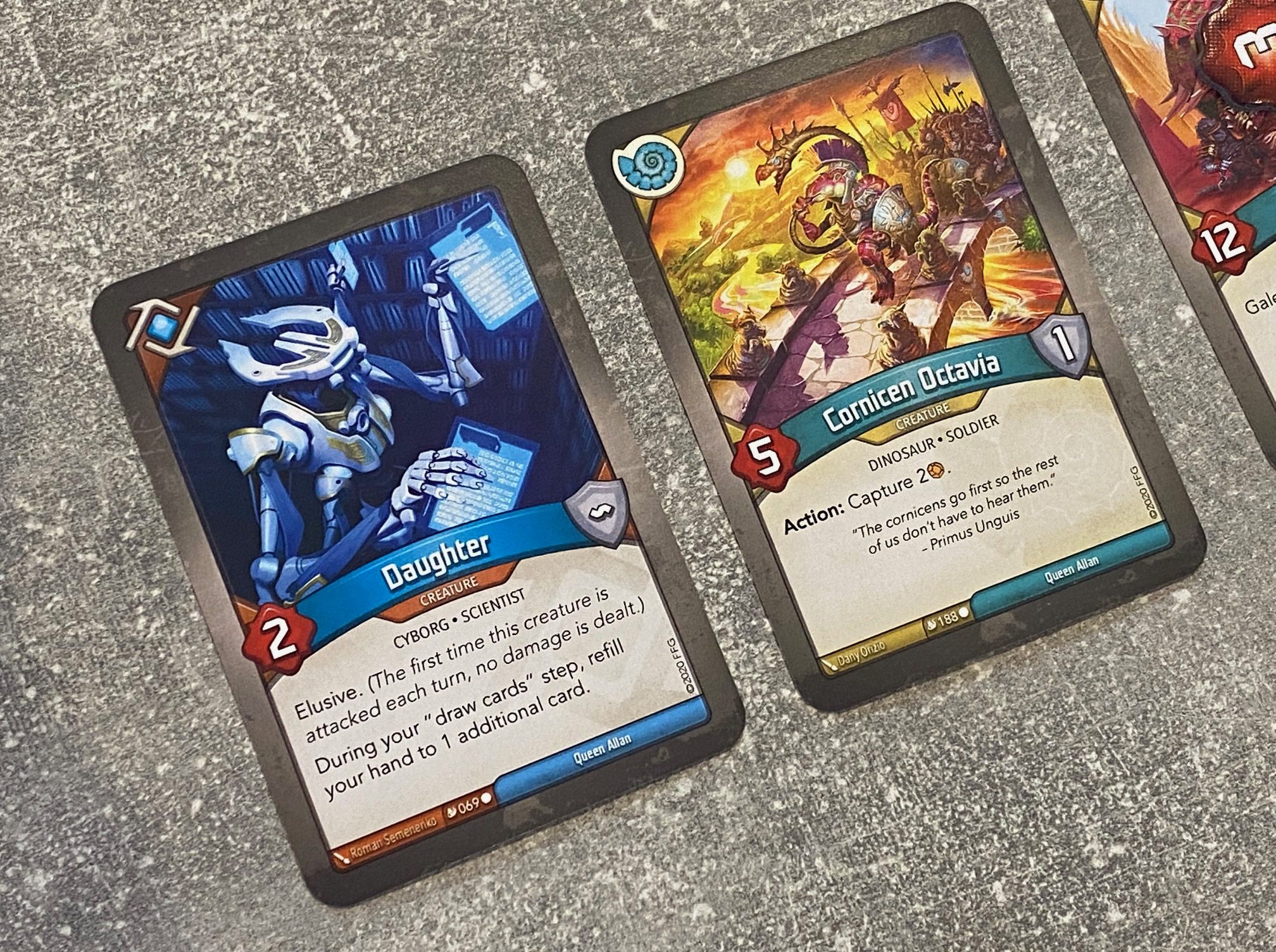
At this point, all of your none Sanctum cards (either in hand or on the table) are redundant for the turn and won’t be used. Instead, you can play the card in your hand and resolve its play ability (if it has one) and take the benefit of any enhancements printed on it (unique to Mass Mutation at present). You can then activate both of the Sanctum cards on the table in turn, by following the rules of the Reap action (take an æmber) and the printed Action effect.
If you did have other Sanctum cards in your hand you could also have played them (except on turn one, where only one card can be played) or you could discard Sanctum cards from hand freely. You may also have activated any number of other effects on Sanctum cards on the table, had there been more than two cards out. I should also mention that when a card is used in this way, it is turned sideways to note that it is exhausted.
With cards played and actions taken, you will then “ready” your creatures by returning them to an upright position, and then draw cards back up to your hand limit (which is usually six). After this, play passes from you, to the other player, and they begin the process of checking for forged keys and declaring a house.
I’ve already mentioned that Mass Mutation has some new mechanics in it, two of which actually take older cards and change them. The first of these is through the use of enhancements which I’ve already discussed a couple of times. These are symbols printed on the top left of a card that enhance that card — by drawing æmber or cards, or by stealing æmber from your opponent, or dealing bonus damage.
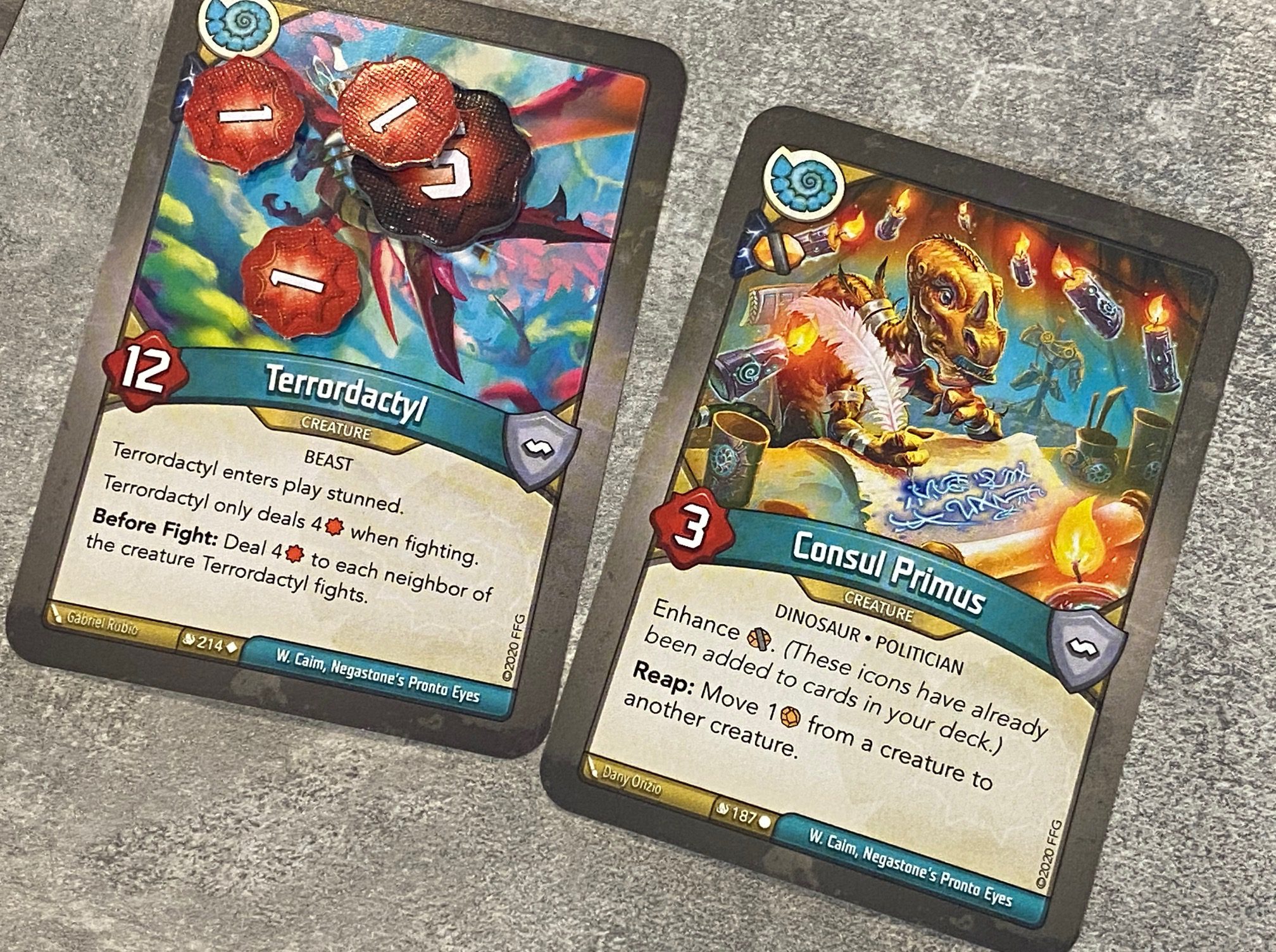
These enhancements appear to be dished out as randomly as the actual deck creation is, with some cards that are already powerful receiving several bonuses, and other, weaker cards receiving bonuses that are still not useful enough to make the card feel great. Nonetheless, when you do see a powerful creature with card draw, bonus damage and bonus æmber, it’s overwhelmingly exciting, and enhancements on cards are never, ever bad.
Mutated cards are different, because they are essentially new cards, but based on the thematic elements you’ll have experienced in previous sets. One such example is Bad Penny, a popular card from the original set, who now reappears as Rad Penny. Bad and Rad Penny are thematically the same character, but in Mass Mutation, Rad Penny is the “current” incarnation of this roguish Shadows creature.
Rad Penny’s ability to steal one æmber each time she is played, and be shuffled back into your deck when destroyed makes her a real pain in the neck for opponents to deal with — especially if she also happens to come with one or more enhancements printed on her. Sadly, the two versions of Rad Penny that I’ve seen didn’t have enhancements — which might nod to some inbuilt limit on which cards can have them, but we’ll never know that for sure.
The final, and undoubtedly most swingy addition to Keyforge via Mass Mutation is that of dual card creatures. These, simply put, are huge and unusually powerful creatures that are “so massive” that they require two cards. The idea is very cool and in reality, when you manage to drop such a creature onto the battlefield, it creates more than just the occasional groan from your opponent, such is the power level.
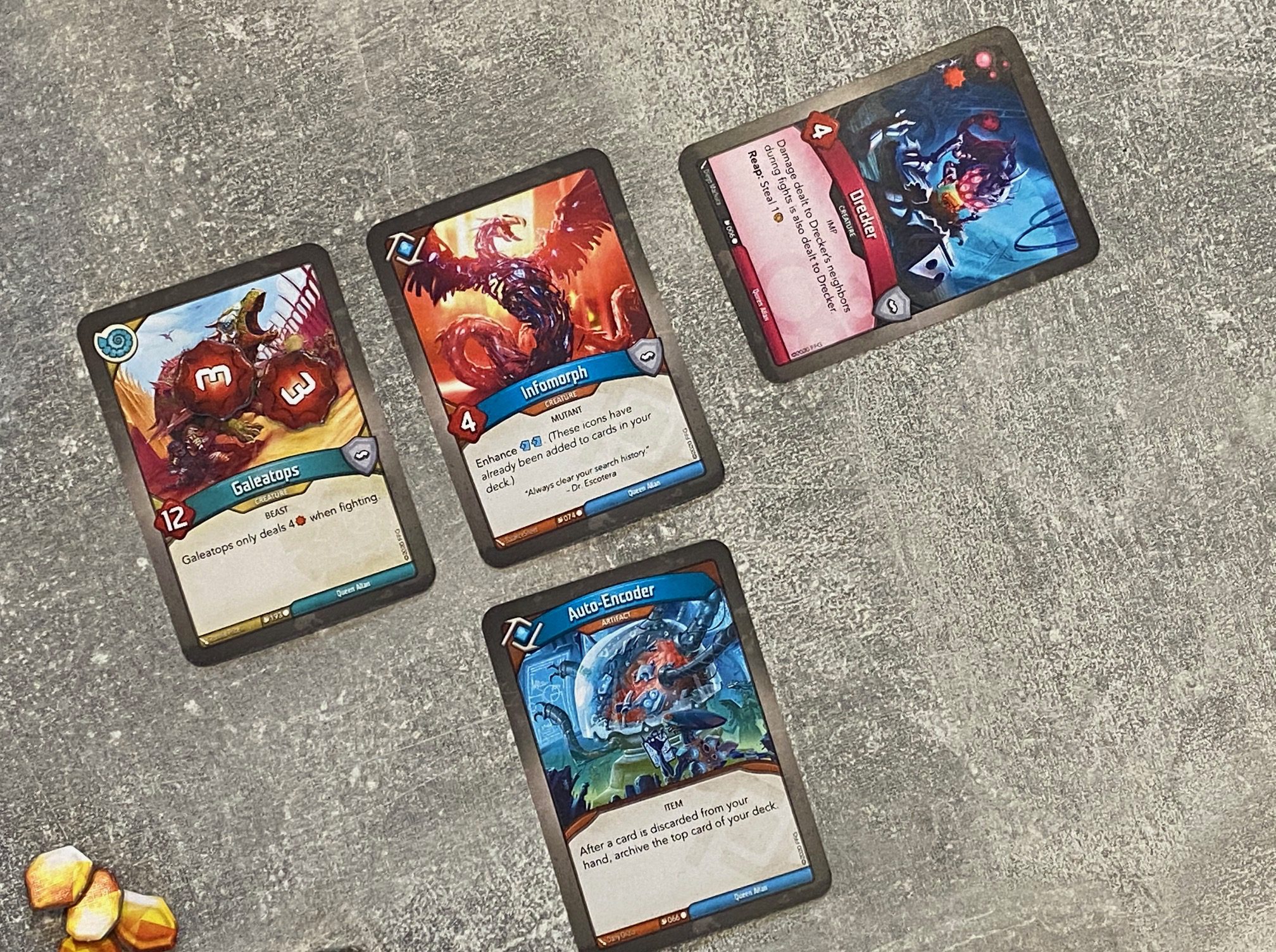
The rules around these behemoths are a bit fiddly however, with each dual card creature counting as a single card when played and once on the table, but as two separate cards for the purpose of your hand limit and when searching your deck. In a nutshell, you (and your opponent) get the benefit of the dual card creature being one card for targeting effects, but you get the downside that you can only search up one half of the creature at a time, and your hand is effectively filled by one half of the creature, until you find or draw the other half.
This, honestly, is a very classic trading card conundrum. How powerful does a creature have to be in order for you to want to take the risk of never finding the second half, whilst the first clogs up your hand? Honestly, the answer — like a lot in Keyforge — is highly variable. I can very much imagine how a deck that can consistently seek out these creatures and play them would be powerful, but it takes quite a favourable combination of cards and enhancements for such a deck to become a reality, and personally, I haven’t drawn such a deck.
What I can say about Mass Mutation for sure is that it’s a really fun set, with some interesting houses and a great mix of old, enhanced and new cards that come together to great effect. For me, this is the swingiest set yet (and that’s saying something) since the enhancements and dual card creatures can add even more randomness into the mix, often compounding weird situations for either better or worse.
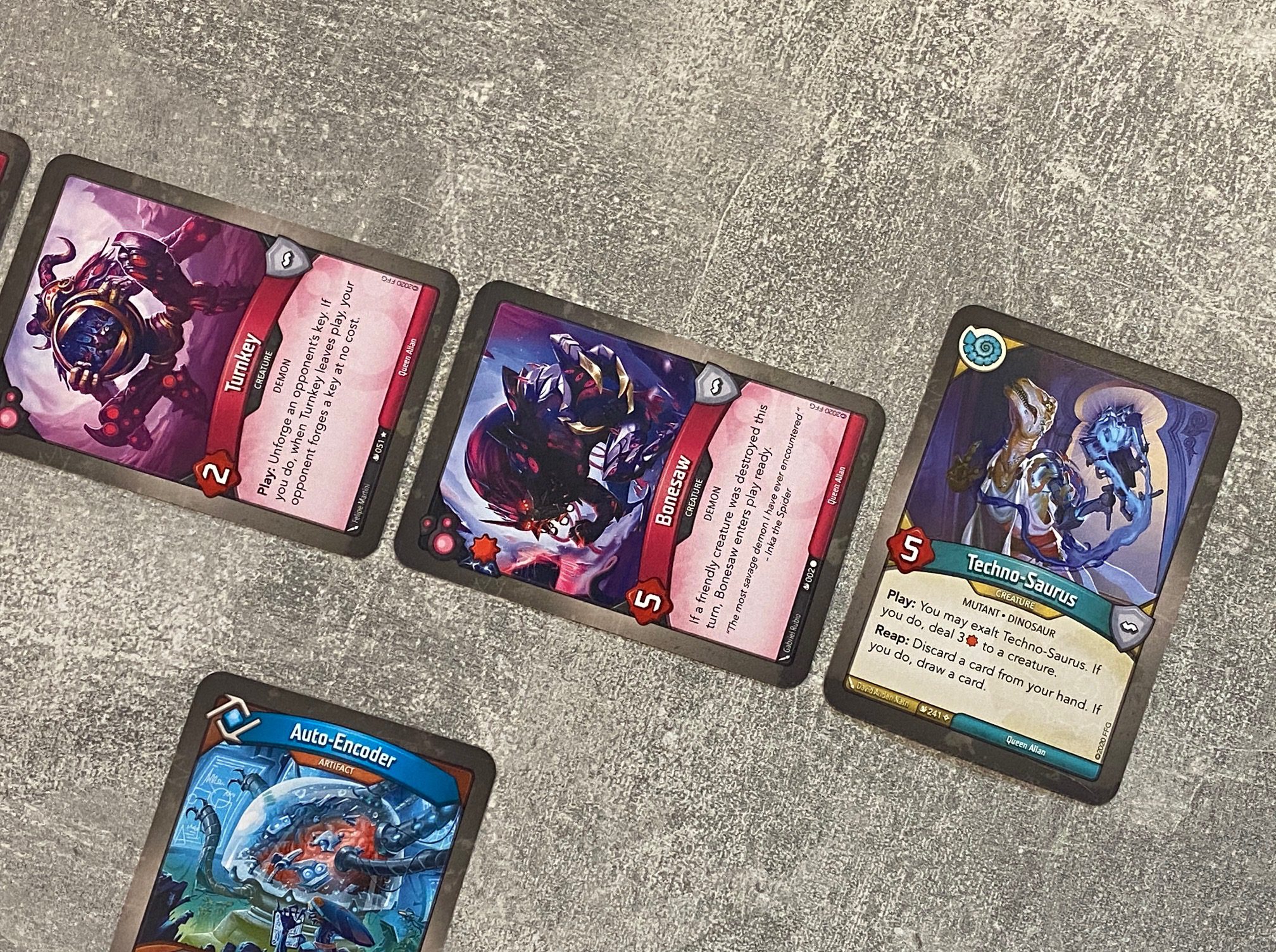
Don’t let the idea of randomness put you off though, because Keyforge remains the best bang-for-buck card game of its kind today. Unless you are deeply entrenched in something like Magic: The Gathering, then frankly, I don’t think you’ll ever need another game of this kind besides Keyforge.
The sets can be played interchangeably, and one Starter Set from any set will give you most of the tokens and pieces that you need. The rules are updated via a living rulebook online, so you can always print it to learn the latest mechanics and keywords. A single Keyforge deck from any set is less than ten pounds more or less anywhere — unless it happens to be an unregistered, demonstrably powerful deck in which case you’ll find it on eBay for a few hundred quid.
In summary, Mass Mutation itself is a fab new way to play Keyforge, but it might be a slightly taxing place to start if you’re a completely newbie. For returning players, or those already deeply entrenched in the hobby, I think Mass Mutation just takes the core Keyforge concept and “dials it up to eleven” in terms of the madcap fun that the series has become known for. Personally, I love the risk and reward that this set introduces, and the core game is certainly no worse than excellent before you even factor the new changes into it.
You can find Mass Mutation on their website.
Comments are closed.